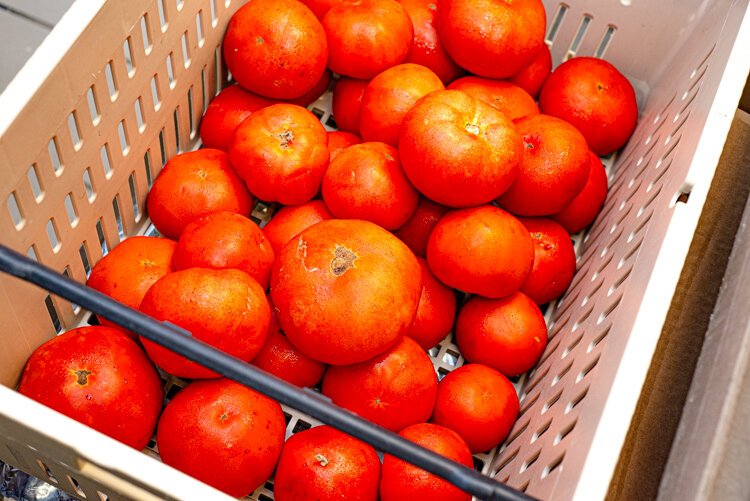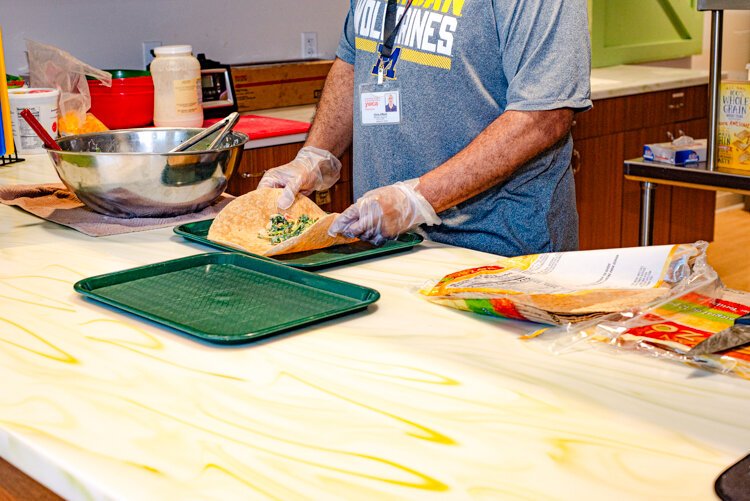It’s a different type of learning when a child tastes and appreciates garden-fresh foods. Childcare providers are learning this through the program 10 Cents a Meal for Michigan’s Kids and Farms, where eligible facilities receive money from the state of Michigan when they provide children with fruits, vegetables, and legumes that are Michigan-grown.

 Taylor ScamehornChris Elliott at the Edison YWCA opens the doors to the kitchen so that children can see the food being prepared.
Taylor ScamehornChris Elliott at the Edison YWCA opens the doors to the kitchen so that children can see the food being prepared.
“Michigan is rich in agriculture, and a lot of food program managers at schools and early care and education sites want to purchase and serve Michigan-grown fruits, vegetables, and legumes,” says Megan Maddox, of the Farm to Program Team with the Michigan Department of Education. “Many are probably already buying local foods from their broadline distributor, food hub, farmers market, or retail store. Why not receive reimbursement of 50% of the costs for eligible food purchases?
“10 Cents a Meal helps supplement the budgets food service programs have available for fresh produce, encouraging a greater menu variety and healthy eating habits for kids statewide. Building Farm to Program partnerships with local farms and distributors also helps invest in the local food business economy.”

 Taylor ScamehornChildren enjoy a fresh and nutritious meal with local produce, inspired by culinary professionals.
Taylor ScamehornChildren enjoy a fresh and nutritious meal with local produce, inspired by culinary professionals.
Laying the foundation
10 Cents a Meal was established as a pilot program in 2016 and became a state-funded program in 2020. The program is a collaboration between the Department of Education, Michigan Department of Agriculture & Rural Development, Groundwork Center for Resilient Communities, and Michigan State University Center for Regional Food Systems.
The program has grown every year since 2016, and in 2020, school districts in every county and every early care and education (ECE) site became eligible to participate in the program.

 Taylor ScamehornJomo Upton, Chef at the Edison YWCA, serves up potato soup on the side with turkey and cheese wraps with local spinach and tomatoes.
Taylor ScamehornJomo Upton, Chef at the Edison YWCA, serves up potato soup on the side with turkey and cheese wraps with local spinach and tomatoes.
“For the 2023-2024 program year, we have awarded all $9.3 million that was allocated for the (10 Cents a Meal) grant to 269 school districts, ECEs, and community feeding sites,” Maddox says. “We are so proud that more kids and farms will be supported by the program this year than ever before.”
During the 2022-2023 program year, over three-quarters of grantees (77%) reported that 10 Cents a Meal grants allowed them to try new products in their food program that they would not have otherwise tried. During the 2022-2023 program year, food program managers reported that 10 Cents a Meal allowed them to offer more local fruits to students and children (82%); allowed them to offer more local vegetables (72%); increased fruit consumption (73%); and increased vegetable consumption (65%).
“The 10 Cents a Meal program has made huge strides toward making positive impacts to not just grantees and the children they serve, but also with reaching Michigan farmers and food businesses,” says Megan McManus, farm to institution specialist for the MSU Center for Regional Food Systems. “Our food program managers work very hard through all sorts of challenging circumstances to serve our state’s children throughout the year. Their participation in 10 Cents a Meal demonstrates efforts to support local farms and food businesses, feed their children healthy, nutritious foods, and care for their community.”

 Taylor ScamehornTomatoes from Crisp Country Acres delivered to the downtown YWCA Kitchen by the Valley Hub, which sources from 32 different local farms.
Taylor ScamehornTomatoes from Crisp Country Acres delivered to the downtown YWCA Kitchen by the Valley Hub, which sources from 32 different local farms.
Bringing healthy food to more Michigan kids
One of the positives about this program is that all sponsors of a Child Nutrition Program are eligible to participate.
“The 10 Cents a Meal team works hard to provide tailored support to grantees with every level of experience,” Maddox says. “We want all grantees to fully participate in the program, regardless of their current local food procurement, and we help them set goals to expand their Farm to Program activities over time.”

 Taylor ScamehornChris Elliott prepares the turkey and cheese wraps with care. Both locations make the same menu items using the same core ingredients; each chef using their own recipe.
Taylor ScamehornChris Elliott prepares the turkey and cheese wraps with care. Both locations make the same menu items using the same core ingredients; each chef using their own recipe.
The 10 Cents a Meal team is continuing to grow, meaning that it will have more capacity to assist grantees.
“We are looking to increase the number of ECE and community feeding sites participating in the program over the next two years,” Maddox says.
McManus is also looking forward to the future of this program.

 Taylor ScamehornChildren enjoy a fresh and nutritious meal with local produce, inspired by culinary professionals.
Taylor ScamehornChildren enjoy a fresh and nutritious meal with local produce, inspired by culinary professionals.
“Each year, the 10 Cents a Meal program has grown in its reach of grantees and the children they serve, and I’m looking forward to seeing this program have a greater impact in Michigan,” she says. “Despite numerous historical and systemic barriers, communities are working together across the state to change Michigan’s school food system. There’s a lot that can still be done to better support their efforts, and I am looking forward to the progress that can be made.”
The application for the 2024-2025 10 Cents a Meal grant will be available to Child Nutrition Program Sponsors in NexSys by August 2024. Check out the most recent 10 Cents a Meal Legislative and Evaluation Reports, as well as their success stories.
This story is part of a series that explores access, equity, and sustainability through Good Food in Michigan’s thriving food economy. This work is made possible by Michigan Good Food and is supported by the W.K. Kellogg Foundation.

